Jardim Yuyuan - Bilhetes, horário de abertura, destaques e dicas
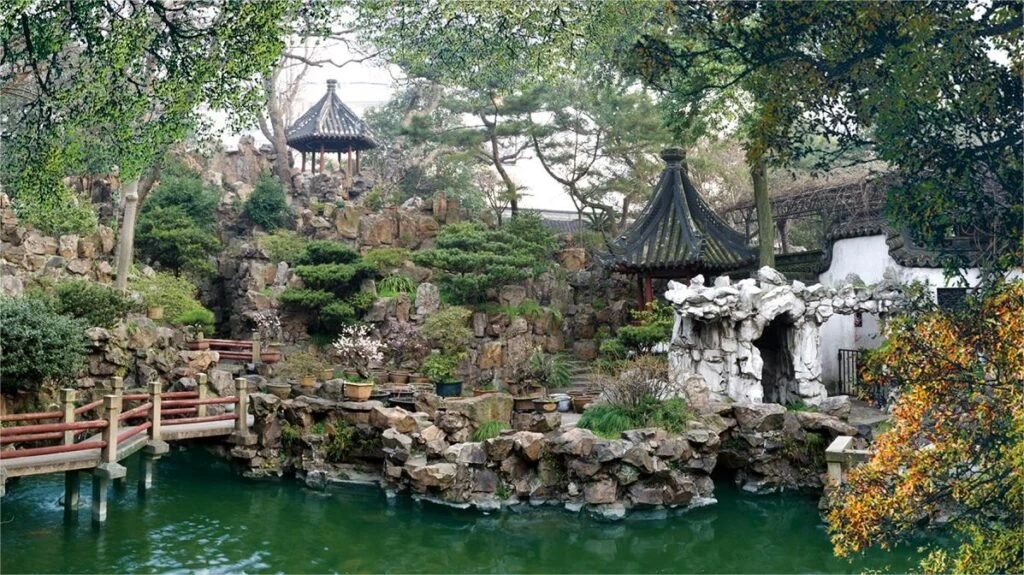

Yuyuan Garden (豫园, Yu Garden), located in the heart of Shanghai, China, boasts a rich history spanning over four and a half centuries. Established during the Ming Dynasty, specifically in the Jiajing and Wanli eras, the garden was conceived by its founder, Pan Yunduan, a former political official in Sichuan province. Pan Yunduan embarked on the ambitious project with the noble intention of providing a tranquil and secure environment for his aging father to enjoy his twilight years.
The name “Yuyuan” carries the auspicious meanings of “peace” and “security,” reflecting Pan Yunduan’s heartfelt wish for his father’s well-being. The garden’s initial construction began in the year 1559, with Pan Yunduan transforming his own vegetable field into a meticulously designed landscape. Over the course of more than two decades, through painstaking efforts, Yuyuan Garden took shape as a testament to the dedication and artistry of its creator.
In its early years, Yuyuan Garden covered an expansive area of over 70 acres, showcasing the meticulous craftsmanship of Zhang Nanyang, a renowned garden designer from the Ming Dynasty. Zhang not only conceptualized the garden but also actively participated in its construction, resulting in a grand and picturesque landscape. Today, Yuyuan Garden occupies a more modest 2 hectares but continues to captivate visitors with its diverse architectural elements, including intricately designed pavilions, unevenly spaced buildings, rugged rocks, and lush greenery.
The garden exudes a sense of tranquility and elegance, embodying the artistic style of Jiangnan garden architecture from the Ming and Qing dynasties. Yuyuan Garden is a harmonious blend of serenity and sophistication, with its delicate and transparent beauty showcasing the distinctive characteristics of traditional Chinese garden design.
Índice
- Informações básicas
- Localização e transporte
- History of Yuyuan Garden
- Highlights of Yuyuan Garden
- Vlog about Yuyuan Garden
- Dicas úteis resumidas a partir de comentários
- Facts about Yuyuan Garden
- Attractions near Yuyuan Garden
- Other Classical Gardens in Shanghai
Informações básicas
| Sítio Web | https://www.yugarden.com.cn/ |
| Duração estimada da excursão | 1-3 horas |
| Preço do bilhete | 40 RMB (April 1st – June 30th; September 1st – November 30th) 30 RMB (July 1st – August 31st; December 1st – March 31st) |
| Horário de funcionamento | 09.00 – 16.30; Last entry: 16.00 Encerrado à segunda-feira |
| Telephone number | 0086-021-63260830*0 |
Localização e transporte
Yuyuan Garden is located to the east of the city center, about 500 meters to the south of the Bund, and to the west of the Huangpu River. You can get there by bus, subway, or private car.
Metro: Take subway line 10 or 14, get off at Yuyuan Sation, and walk south about 400 meters
Autocarro: Take No. 64, 736, 911, or 930, get off at Xinbeimen Stop, and walk south about 100 meters
Auto-condução: Although Yuyuan Garden does not have its own parking lot, there are many shopping malls nearby. You can leave your car there. It is pretty convenient.
History of Yuyuan Garden
The history of Yu Garden dates back to the 16th century during the Ming Dynasty. It was initially constructed in 1559 by Pan Yunduan, the son of Pan En, a Ming dynasty official. Pan Yunduan built the garden to provide a peaceful retreat for his father to enjoy during his retirement. The garden, originally named Yu Yuan, meaning “Garden of Happiness and Peace,” covered an area of 70 acres and was one of the most renowned gardens in the Jiangnan region.
Throughout its early history, the garden underwent several expansions and renovations, reaching its peak during the Qing Dynasty. However, by the late Qing Dynasty and early Republican era, the garden fell into disrepair due to neglect from Pan Yunduan’s descendants and various conflicts and invasions, including the First Opium War and the Taiping Rebellion.
In 1760, the garden was purchased and restored by a group of local gentry, who donated it to the nearby City God Temple. Over the following years, the garden underwent further modifications and expansions, becoming a popular gathering place for scholars, merchants, and local residents.
During the 19th and early 20th centuries, the garden faced numerous challenges, including damage caused by warfare and neglect during the tumultuous period of modernization and foreign intervention in China. However, efforts to restore and preserve the garden began in the mid-20th century, with significant renovations undertaken in the 1950s and 1980s.
In 1986, Yu Garden was designated as a National Key Cultural Relic Protection Unit, leading to comprehensive restoration efforts under the guidance of Dong Liangguang, the garden’s manager, and Professor Chen Congzhou from Tongji University. These efforts focused on preserving the garden’s historical authenticity while enhancing its aesthetic appeal.
Highlights of Yuyuan Garden
Sansui Hall
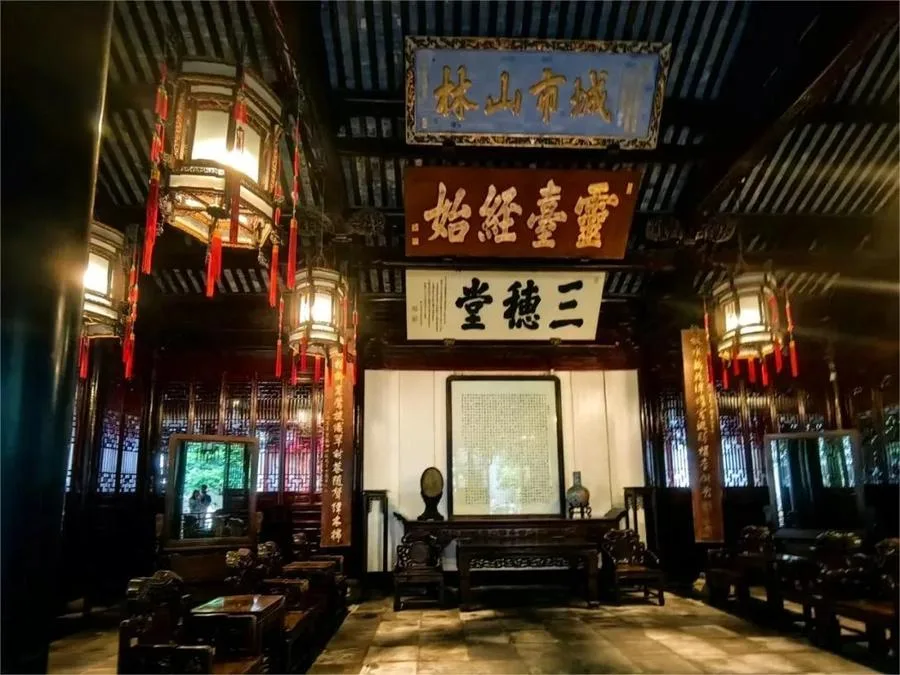
Sansui Hall, located in the northeastern part of Yuyuan Garden, is a significant architectural feature with a rich history. Originally named Le Shou Tang, it was constructed in the twenty-fifth year of the Qianlong reign of the Qing Dynasty (1760), with its name conveying the meaning of “wisdom brings joy, benevolence brings longevity.” In the early Qing Dynasty, Sansui Hall was requisitioned as the office space for the Shanghai County Magistrate, symbolizing the aspiration for rapid career advancement, as implied by the phrase “one grain yields three ears,” a Chinese idiom for exceptional success.
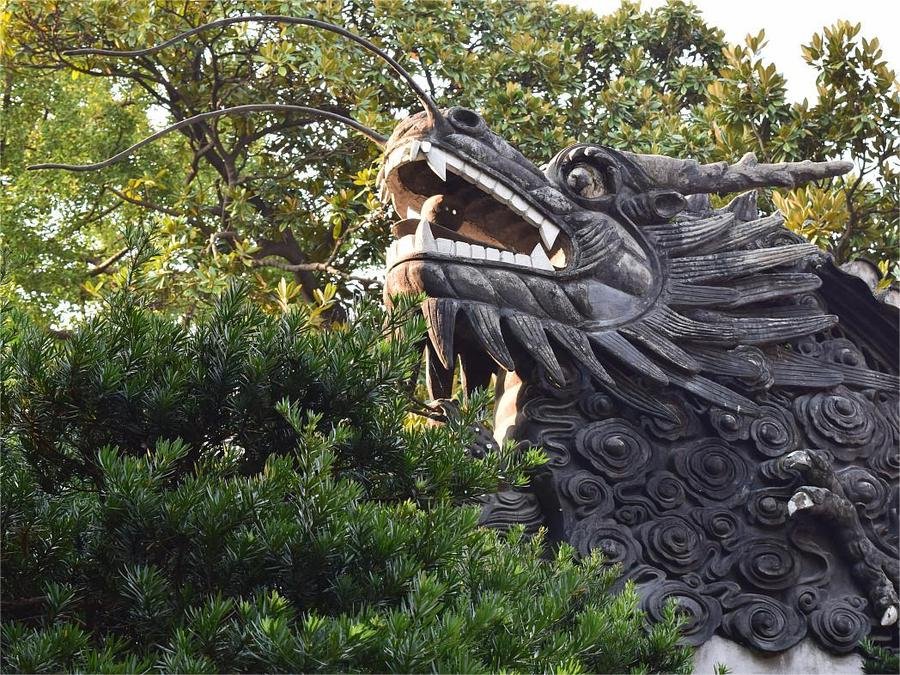
During the late Qing Dynasty, Sansui Hall became the standard measurement site for beans and rice, earning the moniker “Jiao Hu Pavilion.” The area surrounding Sansui Hall is adorned with numerous sculptures and reliefs, each carrying profound meanings. For instance, the brick relief “Competing for Top Honors in the Military Examination” at the entrance of the corridor encourages individuals to strive for academic excellence and serve the nation. Other sculptures symbolize auspiciousness and prosperity, such as the Ruyi motifs adorning the roofs of Sansui Hall and Juan Yu Tower, aligning with the wishes of the garden’s owner. They signify good fortune and longevity, while the relief of elephants on the roof of Juan Yu Tower, symbolizing longevity, echoes the homophonic association of “elephant” with “auspiciousness,” conveying the wish for eternal renewal and peace.
Wanhua Tower (Tens of Thousands of Flowers Tower)
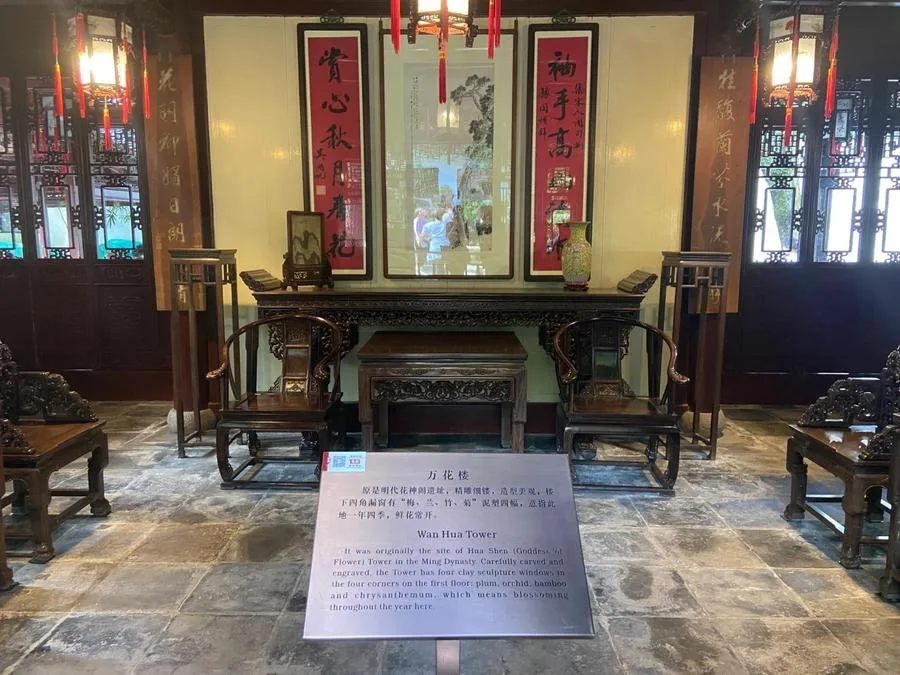
Another highlight of the Yuyuan Garden is the Wanhua Tower, situated in the northern part of the garden. Known for its exquisite ornamentation and clever layout, it provides visitors with a space for contemplation and imagination. The main structure of Wanhua Tower was rebuilt in the twenty-third year of the Daoguang reign of the Qing Dynasty (1843) and was originally named “Shenchi Hall,” which means “divine and human beings are only a short distance apart.” After the founding of the People’s Republic of China, it was renamed “Wanhua Tower,” signifying the profoundness of myriad flowers, aligning with the original intentions of its builder, Pan Yunduan.

Wanhua Tower features numerous sculptures related to the Eight Immortals, symbolizing the garden owner’s aspiration for enlightenment and immersion in the beauty of nature. These sculptures convey the message of encouraging future generations to do good deeds and strive for spiritual attainment. Another significant set of sculptures depicts the theme of “Fishing, Woodcutting, Farming, and Reading,” representing the basic lifestyle of ancient Chinese laborers. It reflects the yearning of government officials, after experiencing the ups and downs of officialdom, for a simple and natural rural life free from the pursuit of fame and fortune.
Dianchun Hall

Dianchun Hall, derived from a line in the poetry of Su Dongpo, “Green dots adorn the spring beauty,” serves as a venue for family gatherings and feasting during festive occasions. In front of the hall lies a small stage named “Dachangtai,” intricately carved with floral motifs, showcasing the infiltration of folk culture from the Ming and Qing dynasties into garden landscapes.
The most prominent feature of Dianchun Hall is its numerous sculptures imbued with the meaning of warding off evil, totaling up to 15 locations, primarily concentrated in Hexu Hall and Dachangtai, with scattered distributions on the roofs of other buildings. These roof tiles, shaped like generals, are divided into “civil officials” and “military officers.” Many identifiable military officers are figures from the Three Kingdoms period, such as Guan Yu and Lu Bu, serving the role of exorcising evil spirits and holding a position of household guardian gods in people’s minds. The civil officials among these roof tiles symbolize success in the imperial examination and smooth career advancement.
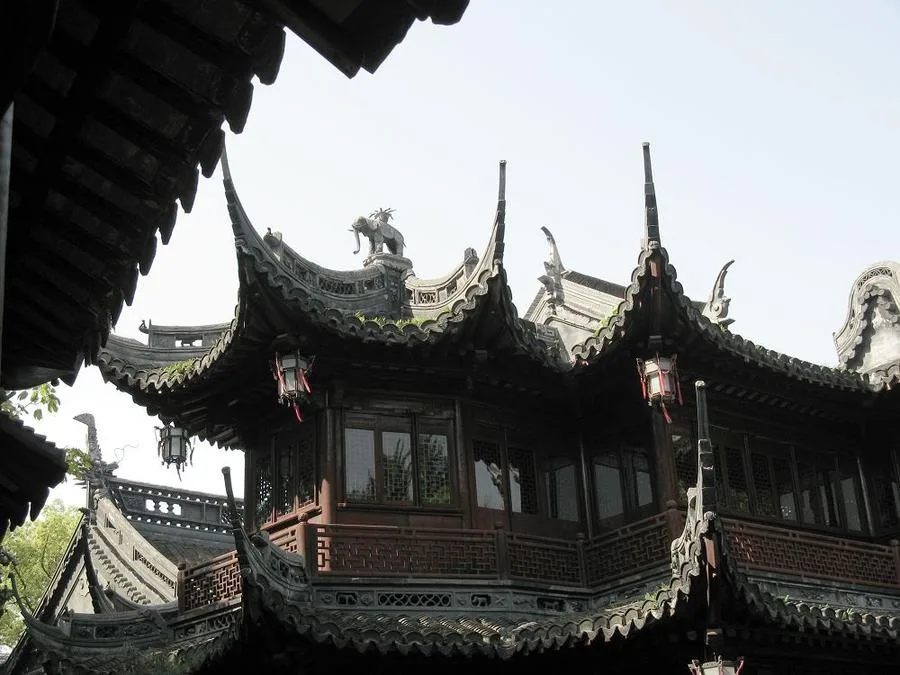
Following closely in frequency are sculptures symbolizing wealth and the continuity of life, totaling 9 locations. For instance, the twin deer and twin cranes on the left and right sides of the Dianchun Gate tower, and the long scrolls on the upper block depicting the lively scene of welcoming meritorious officials. The patterns and motifs of the brick carvings exude a joyful and festive atmosphere, aligning with the symbolism of prosperity and the vitality of spring within the scenic area. Other sculptural elements also aptly echo the theme of the area. For example, the main ridge of Hexu Hall is carved with “The Three Stars of Fortune, Prosperity, and Longevity” and “Two Immortals of Harmony,” representing the universal desires of people and secular ideals of “family harmony” and “marital bliss.”
Huxinting Teahouse
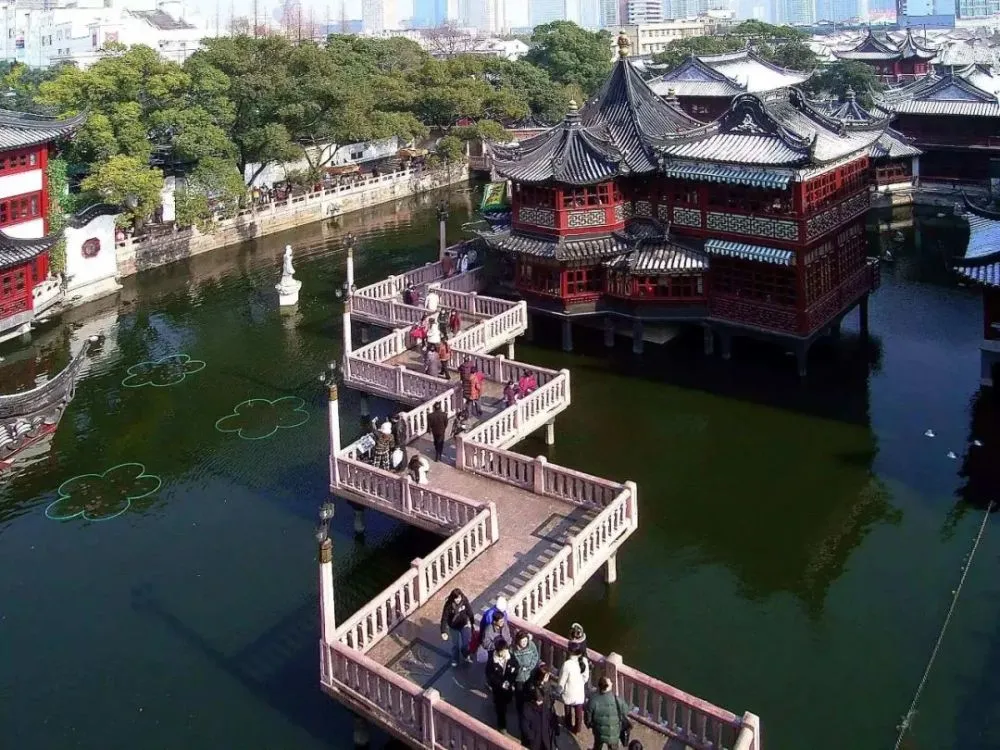
In the center of the artificial lake in Yuyuan Garden is the Huxinting Teahouse. The wooden pavilion was built nearly 200 years ago and is the oldest teahouse in Shanghai. Unlike other historical buildings that have gone through several renovations or are completely rebuilt, this one has remained intact in the last two centuries. And it is still open to the public nowadays.
The first floor caters to ordinary citizens, while the second floor provides high-end tea and cakes. The average cost is about 100 RMB. You should definitely pay a visit to experience the life of wealthy businessmen and gentries in ancient times.
Templo do Deus da Cidade

Next to Yuyuan Garden is the City God Temple. It is said to be built over 600 years ago and enshrines Huoguang, a general in Han Dynasty (202 B.C. – 8 A.D.).
The city gods are quite a unique existence in China. Instead of being born as gods, they are often famous local individuals who had obtained marvelous achievements or demonstrated high-standard morality when they were alive and are therefore enshrined after they died. They are responsible for the everyday affairs and the afterlife of residents nearby.
If you are interested in Chinese folk culture and myth, you should not miss this place.
Yuyuan Bazaar

As the old city center of Shanghai, the area where Yuyuan Garden is located has gathered many shops. In fact, it is still one of the three most famous commercial centers in Shanghai. Some of the stores’ history can be traced back to 100 years ago, and the buildings are all in traditional style. Yuyuan Bazaar is a good place to buy souvenirs, try local food, and take photographs.
Vlog about Yuyuan Garden
Dicas úteis resumidas a partir de comentários
Explore Nearby Wholesale Shops and Souvenir Stores: After visiting Yuyuan Garden, take some time to explore the nearby area, which is filled with wholesale shops and souvenir stores. Here, you can find a variety of items at reasonable prices, making it a great place to pick up souvenirs.
Convenient Transportation: Yuyuan Garden is easily accessible by public transportation. If you’re taking the subway, it’s recommended to use Exit 1 of Yuyuan Station (Line 10) or Exit 7 (Line 14) for added convenience.
Visit Chenghuang Miao (City God Temple) at Night: Chenghuang Miao, or City God Temple, is a must-visit attraction in the area, especially at night. The beautiful lighting illuminates the entire architecture, creating a stunning and ethereal atmosphere. It’s a perfect opportunity for memorable photos.
Explore the Food Street: After exploring Yuyuan Garden, don’t miss the nearby food street, where you can find a wide variety of culinary delights. The architecture of the food street mirrors that of Yuyuan Garden, adding to the ambiance. Keep in mind that while the food options are plentiful, prices tend to be on the higher side compared to other areas.
Plan Your Visit: Yuyuan Garden can get crowded, especially during peak tourist seasons. To avoid long lines and crowds, consider visiting during weekdays or early in the morning. This allows you to explore the garden and surrounding attractions at a more leisurely pace.
Facts about Yuyuan Garden

How to get yuyuan garden from putong airport by maglev

Do I need my passport for yuyuan garden

Is it Yu Garden or Yuyuan Garden
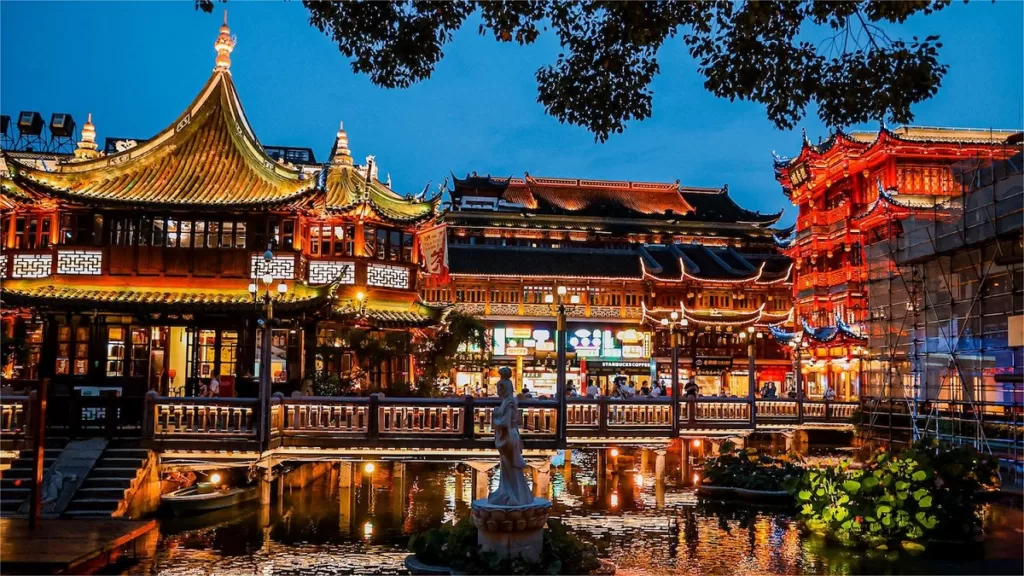
The different Yuyuan Garden at night
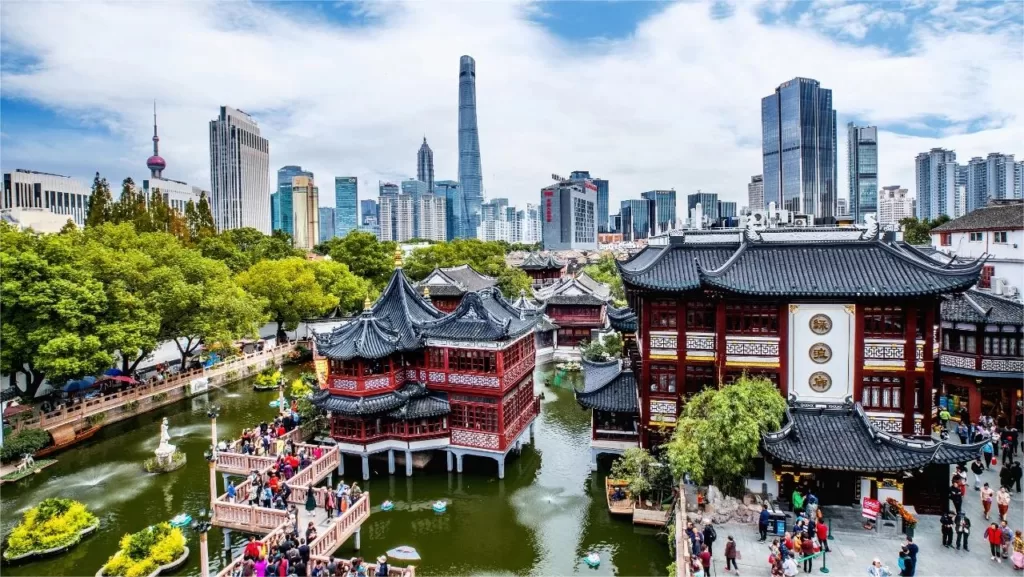
What to do around Yuyuan Garden

Yuyuan Garden lantern festival

Nanxiang steamed buns in Yuyuan Garden
Attractions near Yuyuan Garden

Nanjing Road - uma das ruas comerciais mais movimentadas
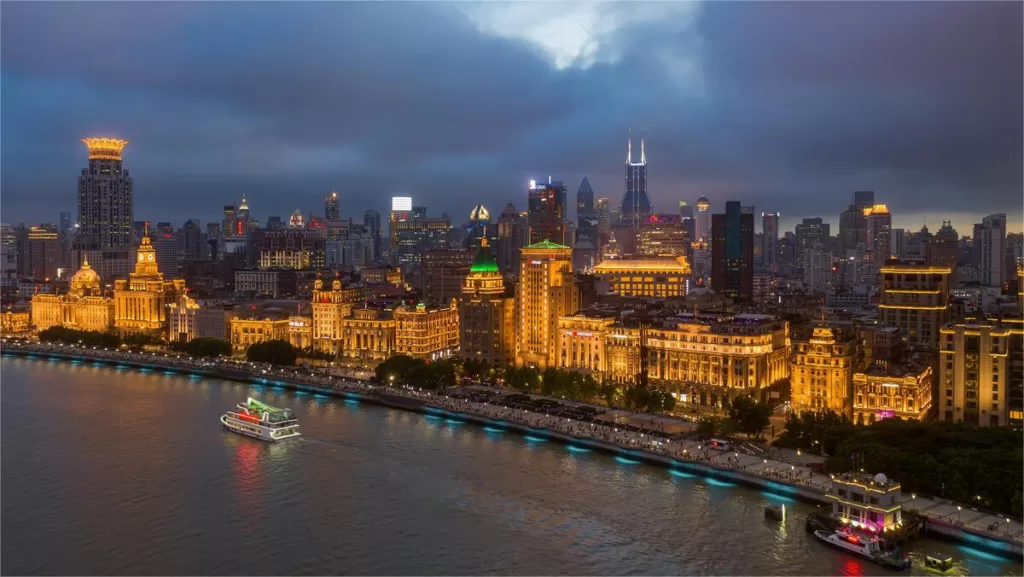
O Bund - o ícone de Xangai

Huangpu River Cruise – views from another angle
Other Classical Gardens in Shanghai

Shanghai Grand View Garden – the garden in “Dream of the Red Chamber”

Guyi Garden – a Ming dynasty masterpiece